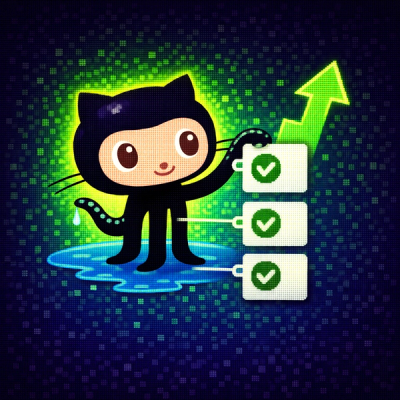
Security News
GitHub Actions Pricing Whiplash: Self-Hosted Actions Billing Change Postponed
GitHub postponed a new billing model for self-hosted Actions after developer pushback, but moved forward with hosted runner price cuts on January 1.
ef-open
Advanced tools
EllationFormation: CloudFormation Tools for AWS by Ellation
The easiest way to install ef-open is to use pip in a virtualenv:
$ pip2 install ef-open
or, if you are not installing in a virtualenv, to install globally:
$ sudo pip2 install ef-open
or for your user:
$ pip2 install --user ef-open
If you have the ef-open installed and want to upgrade to the latest version you can run:
$ pip2 install --upgrade ef-open
Note: ef-open works only on python2:
$ pip2 install ef-open
ef-cf - Evaluate templatized CloudFormation templates, with the option to generate changesets or apply them
ef-cf-diff - Test some or all templates against a target environment, for differences
ef-check-config - Validate the config files for JSON correctness
ef-generate - Ensure the existence of various standard elements for a target environment
ef-instanceinit - Host startup script which copies customized instance config from S3 to the local host
ef-password - Manage an encrypted secrets file, with the keys stored in AWS's KMS
ef-resolve-config - Generate late-bind config assets, for testing
ef-version - Manage versioned tagging for AMI's and static assets
This project uses Python unittest framework for unit tests, and pylint for lint checking.
python setup.py test
pylint --rcfile=./pylintrc ./efopen
This project uses Versioneer to manage the release versions, based on Git tags on the code repository.
Versions for Git working copies are generated on the fly based on the commit status of the working copy, and will change automatically as modifications are made and committed to the repository. For released packages, versions are frozen during packaging, and reflect the state of the working copy at the time the package was built.
Generated package versions follow the PEP440 spec, and will be of the form:
TAG[+DISTANCE.gSHORTHASH[.dirty]]
Where:
TAG - the most recent Git tag string (written by the user when the Git tag was created)
DISTANCE - the number of commits between the current commit and the given TAG. If this git commit is the tagged commit, this value will be omitted.
SHORTHASH - the short Git ref hash, specifying the specific Git ref of the current commit. If this git commit is the tagged commit, this value will be omitted.
".dirty" - will be appended if the working copy has uncommitted changes to tracked files (but importantly, un-tracked files will not affect this flag).
To cut a new package release (for example, for a version 1.2.3):
git tag -a 1.2.3 -m "Some reasonable tag message"
git push && git push --tags
The Jenkins CI pipeline will then recognize the new tag, build it, and publish it to PyPI. To be sure, watch the Jenkins pipeline progress and ensure that the new package tag is published to PyPI.
DO NOT delete a tag and retag the same tag on a different commit. This will not result in a replacement in PyPI, it will just make you sad.
Copyright 2016-2017 Ellation, Inc. Licensed under the Apache 2.0 License
FAQs
CloudFormation Tools by Ellation
We found that ef-open demonstrated a healthy version release cadence and project activity because the last version was released less than a year ago. It has 3 open source maintainers collaborating on the project.
Did you know?

Socket for GitHub automatically highlights issues in each pull request and monitors the health of all your open source dependencies. Discover the contents of your packages and block harmful activity before you install or update your dependencies.

Security News
GitHub postponed a new billing model for self-hosted Actions after developer pushback, but moved forward with hosted runner price cuts on January 1.

Research
Destructive malware is rising across open source registries, using delays and kill switches to wipe code, break builds, and disrupt CI/CD.

Security News
Socket CTO Ahmad Nassri shares practical AI coding techniques, tools, and team workflows, plus what still feels noisy and why shipping remains human-led.